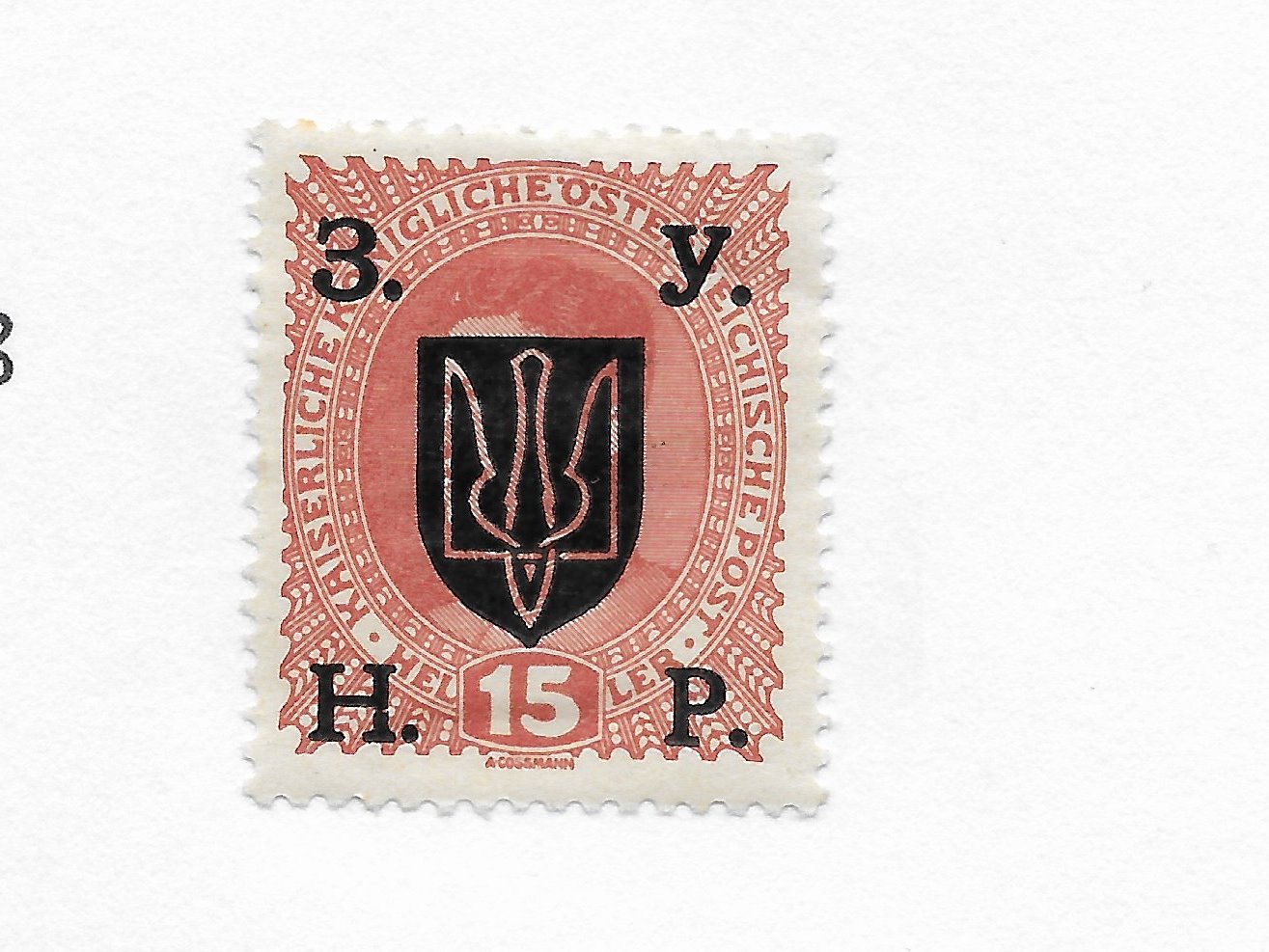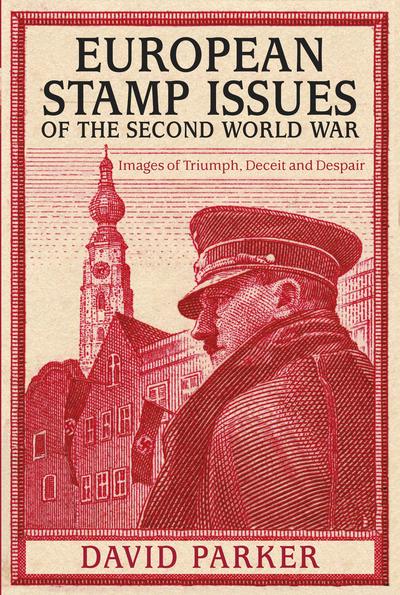16 April 2019
|
In his latest expert stamp blog, Dr David Parker presents stamps that show the Ukraine’s struggle to create an independent republic in the wake of the First World War.
The Ukraine suffered particularly badly during the fighting on the Eastern Front during the 1914-18 war, and several attempts to create an independent republic afterwards were blighted not only by the constant conflict between White and Red armies that ravaged the region until late 1921 but also by the territorial ambitions and aggression of Poland and Czechoslovakia.
A Socialist Tsentraina Rada (National Council) established in Kiev proclaimed independence on 22 January 1918 and signed a separate peace with Germany and Austria on 9 February, but was challenged from its outset by a rival Bolshevik Soviet Republic in Kharkov. In April Pavlo Skoropadsky, an ex-Imperial Russian General, ousted the Rada with German support and established a conservative Ukrainian State that lasted until the Germans left in November.
In July 1918 the fragile state managed to issue one eclectic set of stamps mixing the Ukranian heritage with hopes for its future through images of the ancient trident from the Arms of the national hero Vladimir the Great, Ceres the goddess of agriculture, a peasant, and a victory wreath. In April the set was printed on card with a note on the reverse proclaiming it could be used as paper money.

10sh trident, 20sh peasant and 30sh Ceres from set, July 1918
Various places such as Odessa, Kiev, Kharkov, Kherson, Poltava and Yekaterinoslav supplemented these with huge numbers of Romanov Arms stamps locally overprinted with various forms of the Ukrainian trident to avoid the fraudulent use of unofficially imported stocks. Surplus stocks had flooded in from printers in Constantinople and Paris commissioned originally by General Wrangel, the White Russian commander in South Russia, and overprinted with inflationary values. Large stocks had been ordered for use in the vast refugee camps in Turkey and Greece as Wrangel’s area of occupation shrank.

Trident overprints from Odessa on the Wrangel Russian refugees overprints on 1909-17 Romanov eagle stamps, from series October 1918 onwards.
The German withdrawal opened the way to further warfare between rival factions. Skoropadsky left with Germans, and the Ukrainian nationalist Symon Petliura became leader of the Directorate of Ukraine that for most of 1919 fought both White Russians and Bolsheviks in a desperate attempt to maintain its independency.
The ambitious and aggressive Poles seized Eastern Galicia, and ended its short period of internal autonomy as the Western Ukraine National Republic. Its brief existence centred upon Lviv, Przemysi and Stanislaviv had lasted from early November 1918 to July 1919, but its aspirations remain recorded in the numerous overprinted Austrian stamps it introduced. In the event, very few were actually used for postage.


40h Austrian Feldpost stamp overprinted Poshta Ukr. N. Rep. (Western Ukraine National Republic) from set March 1919, and 15h Emperor Charles overprinted with trident and letters 3 Y H P (Western Ukraine People’s Republic) from set May 1919
However as the Bolsheviks gained ground Petliura accepted the lost of Galicia, and made peace with the Poles. They joined forces against the Red Army which was not only threatening the Ukraine but also Warsaw. Poland defeated the USSR, but the Ukraine did not and in November 1920 Petliura and many of his men sought refuge in Poland. His philatelic legacies are a single ornate stamp issued in January 1919 and the Skoropadsky pictorial set overprinted with Polish values for army use.

20hr Petliura Directorate, January 1919
Relief from famine
The Bolshevik Soviet Republics across the Ukraine won the day. They had united in March 1919, allied with the Russian SFSR in December 1920, and became part of the USSR two years later. A brief period of internal autonomy remained, and in 1923 the Ukrainian Soviet Republic issued a set of surcharged stamps to help relieve the widespread famine.
Strikingly designed, one pictured skeletal Death visiting a peasant, another the cloaked spectre of Famine, the third the State distributing bread, and the fourth the renowned liberal and anti-Romanov Ukrainian artist and poet Taras Shevchenko (1814-61) who had celebrated the region’s countryside, its people and their cultural and political aspirations.


10k+10k Spectre of famine, 20k+20k Taras Shevchenko, 90k+30k Death and peasant, and 150k+50k Ukraine distributing bread, set June 1923
QUICK LINK: Romanov propaganda and deception
 Dr David Parker is the author of European Stamp Issues and the First World War, published by Halsgrove Publishing.
Dr David Parker is the author of European Stamp Issues and the First World War, published by Halsgrove Publishing.
The book provides a fascinating portrait of the turbulent decades of the early twentieth century, revealed through miniature works of art that are in themselves important historical sources.
ISBN 978 0 85704 330 6, hardback, 297x210mm, 168 pages. Published October 2018.
 Dr David Parker's book European Stamp Issues of the Second World War: Images of Triumph, Deceit and Despair is published by History Press. This remarkable collection examines and interprets the stamps of twenty-two countries across western and eastern Europe.
Dr David Parker's book European Stamp Issues of the Second World War: Images of Triumph, Deceit and Despair is published by History Press. This remarkable collection examines and interprets the stamps of twenty-two countries across western and eastern Europe.
The glorification of the Führer and Germany on the stamps of countries he most oppressed was inevitable, but many issues are ambiguous and indicative of the rival ethnic and political forces striving to attain influence and power. Desperate to unite the people, Soviet Russia resorted to images of the nation’s heroic achievements under the Tsars; the mutually hostile puppet states Hitler and Mussolini allowed to emerge out of conquered Yugoslavia lost no time in issuing stamps proclaiming their cultural diversity; and Vichy France sought to justify its existence with issues linking past glories under Louis XIV and Napoleon with an equally glorious future alongside Hitler.
These and many more stories reveal the aspirations, assumptions and anxieties of so many nations as their destinies hung in the balance.
ISBN 978-0750959155. Published May 2015.







